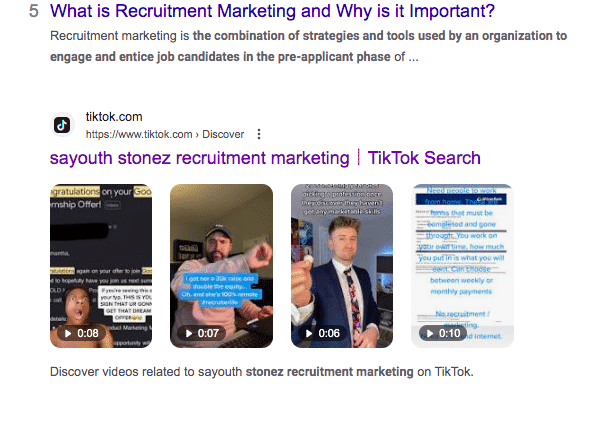
Chris Cornwall is the owner of Searchlight Recruiters, Inc., specializing in Healthtech Life Sciences recruitment since 1999. He is widely recognized in the industry for working predominantly with scaling organizations employing advanced technology and science.

Searchlight Recruiters, Inc. primarily serves angel-funded startups through Series C, assisting them in hiring leadership and key contributor roles, particularly in the development of integrated biology platforms for drug discovery and product or service offerings.
Linked Helper will explore the evolving landscape of recruitment, particularly in light of the Generation Z workforce and remote work trends.
Download Linked Helper 2
and get 14-day free trial right now
DOWNLOADIf you are not yet in our list of users, then join.
We give you a trial version to start your experience with our LinkedIn tool.
Key points from the interview with Chris Cornwall
Cultural Shifts and Recruitment: Understand how cultural shifts, like the “great resignation” and the embrace of remote work impact recruitment strategies and candidate priorities.
Career Growth Matters: Recognize that Generation Z candidates prioritize career growth. Highlight growth opportunities during candidate interactions.
Tailored Outreach: Customize outreach methods based on generational preferences. Consider text messages and non-LinkedIn messaging alongside traditional approaches.
Transparency and Engagement: Build trust with candidates by being transparent and showing genuine interest in their motivations, goals, and preferences.
LinkedIn and Beyond: Use professional social media platforms like LinkedIn as a starting point for candidate research. Explore other platforms for additional insights.
Niche Specialization: Consider specializing in a niche aligned with your background and expertise. Stay informed about industry trends within your chosen niche.
Leverage Automation: Maximize automation tools for campaign management, outreach, and relationship-building on platforms like LinkedIn.
Effective Communication: Follow communication best practices, including follow-ups, honesty, fiduciary responsibility, meaningful questioning, and understanding your value.
Diversify Marketing: Explore platforms beyond LinkedIn to expand your business reach. Choose platforms that align with your target clients and candidates.
Personalization is Key: Prioritize personalization in outreach. Use automation wisely, vet profiles before adding them to campaigns, and craft compelling messages that resonate with candidates.
Recruitment Marketing Importance: Understand the significance of recruitment marketing in building your reputation and authority in your field.
Industry Knowledge Sources: Stay updated with industry insights by utilizing platforms like YouTube, LinkedIn Learning, and industry-specific Mastermind Groups.
Video Content: Consider the use of video, like TikTok, for reaching candidates. Choose platforms where your target audience spends their time.
Effective Networking: Develop networks of industry professionals, including hiring managers and candidates. Maximize your invites to ideal client and candidate profiles.
Balancing Automation and Personal Touch: Strike a balance between automation and personal engagement to create meaningful connections and effective recruitment outcomes.

Recruitment Strategies Unveiled: Q&A with Chris Cornwall
Q1: What are the main challenges you face in recruitment now, considering the transition to a Generation Z workforce and the increasing prevalence of remote work?
Chris Cornwall (CC): Interesting question! As we’re all aware, the COVID-19 pandemic brought about a global transformation in the way we work, with many people required to quarantine at home. This shift made video conferencing a mainstream tool, leaving a lasting impact on both companies and employees.
The “great resignation” phenomenon that followed was, in fact, a cultural shift that had its roots before the pandemic and was amplified by the widespread quarantine measures. During the pandemic, individuals tended to hold onto their jobs, but once the isolation period ended, there was a significant surge in workforce reshuffling. The pandemic, alongside its tragic consequences and various other factors, acted as a catalyst, prompting workers to reevaluate their personal and professional priorities.
Employers who swiftly adapted to these changes through digital transformation and flexible workplace policies emerged as early and ongoing winners in the talent acquisition game.
So, if I were to rephrase the question: Given these cultural shifts, how can we, as recruiters, enhance our effectiveness in attracting and recruiting the best candidates, especially when dealing with Generation Z?
Understanding generational differences and preferences plays a pivotal role in recruitment, ultimately leading to improved hiring outcomes. While these differences are generalizations, they provide valuable insights into how we can approach potential candidates to enhance response rates and adjust interview tactics to identify individuals who align with both the cultural and professional aspects of the organization. Ultimately, achieving better hires often means fostering a win-win situation for both the employer and employee, typically resulting in career advancements rather than lateral moves.
Research has shown that roles offering the potential for career growth correlate with higher job satisfaction, greater retention rates, and reduced turnover, all of which significantly benefit employers. In today’s flexible work landscape, which includes 100% remote, hybrid, and in-office options, Generation Z particularly values choices and flexibility. While these flexible arrangements can be compelling reasons for individuals to change jobs, it’s important to note that we should look beyond mere “benefits” when assessing what constitutes an excellent recruitment and hiring decision.
Explore LinkedIn Recruitment Marketing Ideas to Stand Out from the Crowd.
Q2: How do you envision the development paths and strategies for recruitment in response to these changes?
CC: In terms of the development paths and strategies for recruitment in response to these changes, I wouldn’t recommend focusing solely on hybrid worksite arrangements as a recruitment strategy because these arrangements are a type of benefit. Instead, I suggest leading conversations with Key Performance Objectives and discussing benefits at a later stage.
It’s crucial to recognize and incorporate generational differences into our outreach and campaign methods. For instance, Generation Z is highly proficient in using technology and apps for social interactions. They are more inclined to accept and respond to text messages and non-LinkedIn messaging as initial outreach methods. Therefore, it’s logical and expected to include these communication channels in our outreach campaigns, alongside LinkedIn messaging.
However, if you have access to a valid phone number, don’t underestimate the impact of a traditional phone call and voicemail provided the recipient has voicemail set up and knows how to retrieve messages. Surprisingly, this method can be quite effective.
During the initial recruiting conversation, clarity is essential. Be transparent about who you are and the purpose of the conversation. Generation Z values brevity and directness, so it’s advisable to seek permission to ask a few questions before delving into qualifications. These individuals want to understand what’s in it for them, and they can be cautious and turned off if the conversation rapidly shifts toward qualification. Instead, engage in a dialogue to discover why they took your call, learn what motivates them, understand their career aspirations, and explore their preferences for hybrid work or in-person interaction.
By showing genuine interest and curiosity, and by seeking to comprehend their goals before launching into a discussion about the job, you can gain a significant advantage over competitors who might simply bombard candidates with one-sided qualifying questions. This approach aligns with fundamental sales principles, which, surprisingly, many people tend to overlook.
Q3: Are there any specific techniques or practices that you believe should be left behind to adapt to modern expectations and preferences?
CC: The third-party recruiting industry must undergo a transformation towards a greater emphasis on quality. Here are some key steps in this direction:
- Invest Time in Understanding: Prior to taking any action on behalf of your clients, take the time to thoroughly understand the hiring manager, the company, and the specific job order. A deep understanding of your client’s needs is fundamental to delivering quality recruitment services.
- Define Role Objectives: It’s crucial to clearly define the objectives of the role you’re recruiting for. Recognize that a great candidate isn’t just someone who matches the job title; they should have a track record of performing similar functions and possess the necessary technical skills, and the role should represent a positive career move for the candidate.
- Specialize in a Niche: Focus your efforts on a specific market or industry niche. Developing expertise and proficiency within a niche may require years of dedication, but it will ultimately become a valuable asset. Your knowledge and relationships within that niche will set you apart and enable you to provide more specialized and higher-quality recruitment services.
- Contingency vs. Retained/Exclusive: Distinguish between different types of job orders. Contingency arrangements are suitable for basic job orders, but for critical or high-level positions that demand specialized skills, consider working with a retained or exclusive agency. Multiple contingent recruiters pursuing the same candidate can be counterproductive and potentially detrimental to both the hiring company and the recruiting agency’s reputation.
Q4: With the rise of artificial intelligence (AI) and automation, there is speculation about the potential impact on marketing jobs. Do you think marketing jobs in the recruitment industry will be replaced by AI?
CC: AI will affect all kinds of jobs. The job market will look drastically different in 10 years. It is kind of scary for our younger generations especially. Tech has been evolving the workforce for hundreds of years. When the horse and buggy were replaced by automobiles, there were a lot of jobs that were lost, and the workforce evolved to move into the new roles that were created by the manufacture and maintenance of cars. New industries were formed. With AI automation and machine learning, we have seen initial and dramatic changes in the nature of work. I hope that it is not the beginning of the end of white-collar jobs. I am excited about what this means for certain industry segments like drug development, disease diagnosis, and pre-emptive and personalized medicine; these technologies are advancing science to improve the human condition and enable us to live our best lives.
Things are happening so fast; the genie may be difficult to put back in the bottle. For certain industries, I feel that we need to let the machines help us as much as possible; for others, society may determine that certain rules should be followed to safeguard the workforce and prevent economic collapse or poverty. As a society, we are going to have to consider that some of these jobs might go away or that so much of the job is handled by machines that it will replace 70% or more of the workers in a particular space. As a society, people need to find meaningful work. Our free economy needs to continue to evolve so that we have high-paying jobs for those who want them. People need to earn money to spend money.
So, will marketing jobs in the recruitment industry be affected by AI and automation?
Certainly, AI will enable and possibly replace marketers in all industries. AI removes inefficiency and speeds delivery. Marketing isn’t recruiting, but as recruiters, we are selling a service, and if you are a small business owner or niche recruiting firm owner like me, you will need to market your services or pay someone else to do this. I have never had more tools at my disposal than I do today. So many things in my practice that once took hours to do are done by automation. Because of this, I am able to spend more quality “human time” with my clients and candidates.
Q5: Reverse marketing, where job seekers proactively approach recruiters, has gained traction. Can you share a successful case of reverse marketing in recruitment and how it benefited both the candidate and the hiring organization?
There are a couple of ways this is done. This is referred to as “reverse marketing” because the agency markets workers to potential hiring companies or even other recruiting agencies who might have a match for a particular worker. Typically, recruiting agencies find candidates for specific open jobs, not the other way around.
This is a common practice for agencies that typically provide IT contract workers. In this scenario, the agency marketing the workers most often acts as an employer of record, handling payroll and the workers’ deliverables. Typically, they are skilled IT workers without a green card.
The second category, which I believe you are asking about, is the growing trend of agencies marketing full-time employees for advertised or posted jobs. It’s somewhat similar to a pocket listing in real estate, where an agent has an unlisted “hot property,” and they approach a small number of potential buyers to acquire a truly remarkable asset without it ever hitting the multiple listing service.
In hiring, this does happen, but realistically speaking with a small number of highly qualified candidates.
For the select few, the recruiter contacts hiring managers who either they know are open to making room for someone on their team if a predetermined candidate becomes available, or they simply shop them around to matching companies and hiring authorities at this company. It is this second scenario that appears to be a growing trend. AI and automation have simplified the identification and matching process of identifying open roles that seem to match the requirements of a highly qualified person.
Here is where this process can work and where it does not. Firstly, where it works: Some categories of workers are in very high demand and rarely hit the job boards. Many employers are happy to be approached and pay the agency fee to make room for them on their team. Recruiters who have a trusted relationship with a hiring manager are more likely to make this work. Agencies that peddle candidates who are not at the top of their game or not a match fit will ruin their reputation and wear out the welcome mat. While AI and automation can help identify open jobs and possible fits, care needs to be taken.

Q6: For recruiters entering the industry in 2023, where should they begin and what are the crucial first steps they should take to maximize efficiency and effectiveness?
If you are just starting out, I suggest that you go to work with a firm that can provide training as well as the tools that will enable you to be successful. Automation tools for campaign management are especially helpful to maximize what you are doing on LinkedIn.
Q7: How can recruiters effectively choose and specialize in a specific niche? What factors should be considered when deciding on a niche?
I think that you can decide on a niche very early on. If you are coming from another industry and want to take what you know and apply this to recruiting, this can be a good start. For me, I had come from the healthcare and pharma industry, so right away I decided that my niche was health IT. There wasn’t LinkedIn, so I attended conferences and met people face to face and collected business cards. I took them home and started calling hiring managers and HR. In today’s world, you will be using automation to reach people at scale with the goal of parlaying this to relationships where you are known, liked, and trusted.
Q8: As a tech recruiter, where do you seek industry knowledge and stay updated with the latest techniques? Can you name three to five sources or platforms that you find valuable for acquiring industry insights?
I’ve learned a lot on YouTube and LinkedIn Learning, I read and listen to lots of books (Blinkist is a book summarizing service I recommend), and I have been a part of Mastermind Groups that provide training and knowledge sharing. If you specialize, it is really important to do research and understand what is happening in your niche.
Q9: TikTok has been gaining visibility in Google search results. From a recruitment agency perspective, do you believe it is worthwhile for recruiters to utilize this platform? How can it be effectively leveraged to attract and engage potential clients/candidates?

The use of video to get your message across is an effective medium. TikTok is a platform that is growing for professional use and is more popular for younger people. It is worthwhile to use other platforms besides LinkedIn to grow your business. That being said, understand that the platform where you do business will reflect on you and your business. If your target clients and recruits are hanging out there, then it seems logical for you to post and do business there. So far, I have not made the leap to TikTok, because my clients in healthtech and biotech are not there.
Q10: What is Recruitment Marketing and why is it important?
Marketing your business is essential to grow your business. You need to be a known entity. You cannot be successful being a secret recruiter! You need to be known as an authority in your field. You develop this presence by posting on LinkedIn, writing and sharing knowledge. If you develop a niche then you need to build networks of industry people, both hiring managers and candidates. To quickly build these networks you need to maximize your invites to your ideal client profile and your ideal candidate profiles.
Q11: What are your top everyday tools as a tech recruiter? Which tools do you rely on the most for sourcing, communication, and managing the recruitment process?
I use Loxo as my ATS (applicant tracking system), this includes a comprehensive set of sourcing and outreach tools, campaign management, automation, and AI. I use or have used LinkedIn Recruiter, Seamless AI, Linked Helper, and Indeed, and my communication tools are cell, 8X8, Zoom, and Outlook.
Q12: When reaching out to clients or job seekers, what are the top “do’s and don’ts” you follow to ensure effective communication and build strong relationships?
– Follow up.
– Tell the truth.
– Protect your client and act as a fiduciary.
– Ask great questions.
– Learn to properly interview both candidates and hiring managers.
– Know your value.
– Smile.
– Help others.
– Be generous with your time and resources, even if it won’t earn you a fee in the near future.
– Believe in karma, and it will come back to you.
– Share your knowledge.
– Learn to write copy.
– Understand what is important to the candidate’s career and what represents a career move for them.
– Learn that you need to hear lots of “no’s” before you hear “yes.” Most people will ignore your marketing; it takes at least 7 points of contact before you are recognized.
– Don’t rely entirely on social media for your outreach.
– Pick up the phone and call people, especially your mom.
Q13: What media or platforms do you use to research candidates? How do you leverage these channels to gain insights into a candidate’s background, skills, and fit for the role?
Of course, use one of the professional LinkedIn platforms. It is also helpful to check Instagram, Meta, Twitter X, and GitHub. Using these platforms is the basic starting point of your search, not the end all. Not all candidates are on professional social media, so you need to extend into other research for those hidden candidates. This is where Google search comes into play.
Q14: In your experience, how important is personalization when reaching out to candidates? How do you tailor your communication to make it more personalized and engaging for each individual?
There is always personalization in every outreach. If using automation, at least use the field tool that will insert their first name. These days, I think most people assume that you are using an automated tool, so you are not really impressing anybody by inserting their current title or company into the message.
I feel that it is more important that if you add someone to an automated campaign, you have vetted their profile before adding them to the campaign, and secondly, that you have written a compelling message that states why your role could be a possible career move. Give them a reason to act.
If you aren’t doing this and are sending out messages that are not a match, then it does not serve your reputation; you will lose trust. If you are specializing, this is even more important because you are always trying to build up those in your network who know you, like you, trust you, and view you as an authority in your industry. Timing is also really important; don’t over-message people in a campaign. Don’t use text unless you have permission. Be respectful of personal space and time.